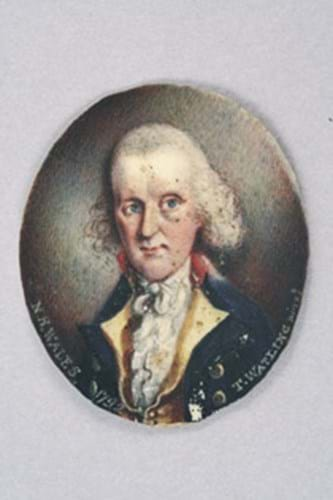
Offered on the final day of their mammoth three-day auction in Lewes East Sussex, lot 2026 was estimated at just £200-300 in the catalogue.
Standing only 2in (5cm) high, it drew determined bidding thanks to its strong connections with Australia. It depicted John White, the chief surgeon for the First Fleet - the 11 ships that sailed to Botany Bay in 1786 to establish a convict settlement.
Morevover, the unframed oil on ivory was by the convict and artist Thomas Watling (1762-1806). It was signed and dated 1792, the year Watling finally reached the colony after being sentenced to 14 years for forging banknotes in Dumfries. On his voyage to Australia, he managed to escape at Cape Town, but was captured by Dutch sailors who transported him to Sydney.
On his arrival, he was very quickly assigned to John White. White had become Surgeon General of New South Wales and, as an ardent naturalist who was collecting and documenting specimens, he made use of Watling's artistic talents. Over the next two years Watling made many drawings which form the basis of the important studies of wildlife, landscapes, and the indigenous people of Australia known as the Watling Collection, now housed in the zoological library of the Natural History Museum in London. Indeed, many of the drawings are annotated in John White's hand.
Watling's only major known surviving work is Sydney in 1794, a large oil painting which hangs in the Dixson Gallery, Sydney. There are some sketches and finished drawings, a few of which have appeared on the market, but the discovery of this miniature appears to be something of a first.
It was consigned to Gorringes by a local general dealer who got it from a house whose owners were clearing the contents before going abroad. How they acquired the miniature is unknown. However, John White does have a connection to East Sussex since, after he returned to England, he spent his last years living in Brighton and died at Worthing in 1832.
It was in decent condition despite some surface dirt on the face and some flaking to the bottom.
With such a connection between the two closely-linked figures in antipodean colonial history, the miniature drew three telephone bidders from Australia. However, it finally sold in the room to a man on a mobile phone. The auctioneers said the buyer was a London private.
By Alex Capon




